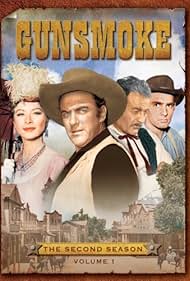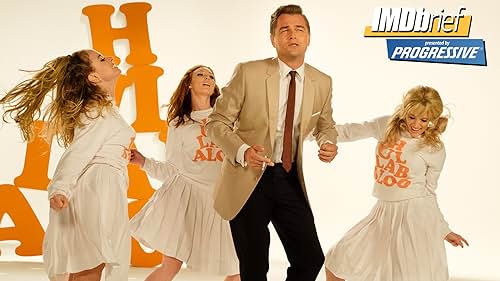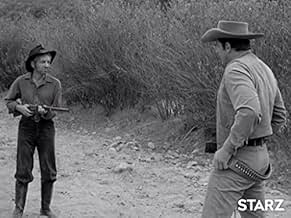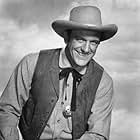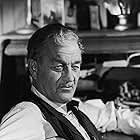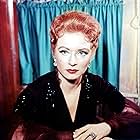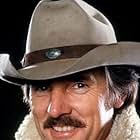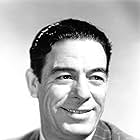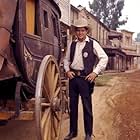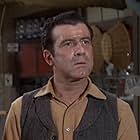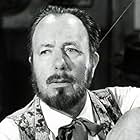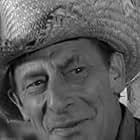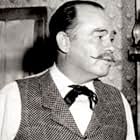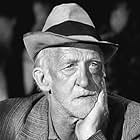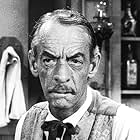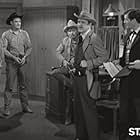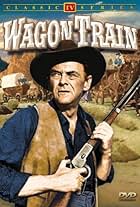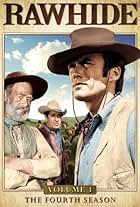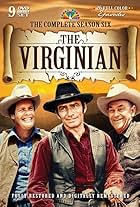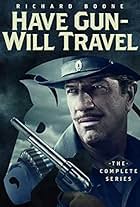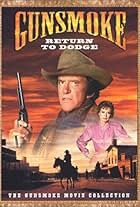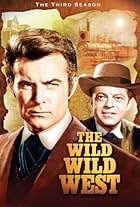Marshal Matt Dillon keeps the peace in rough-and-tumble Dodge City.Marshal Matt Dillon keeps the peace in rough-and-tumble Dodge City.Marshal Matt Dillon keeps the peace in rough-and-tumble Dodge City.
- Won 5 Primetime Emmys
- 15 wins & 25 nominations total
Storyline
Did you know
- TriviaThe show was slated to be cancelled in 1967 due to low ratings, but CBS President William Paley, who was a big fan, reversed the decision. He moved the show from Saturdays to Mondays (cancelling Gilligan's Island (1964) in the process), placing it back in the Nielsen's Top Ten.
- GoofsThe real Dodge City is located on green, rolling plains in SW Kansas. The setting of the series is instead in a semi-arid, hilly/mountainous area.
- Quotes
[the teaser of the very first episode, "Matt Gets It."]
John Wayne: Good evening. My name's Wayne. Some of you may have seen me before. I hope so. I've been kicking around Hollywood a long time. I've made a lot of pictures out here. All kinds. Some of them have been westerns and that's what I'm here to tell you about tonight. A western. A new television show called "Gunsmoke". When I first heard about the show "Gunsmoke", I knew there was only one man to play in it. James Arness. He's a young fellow, and may be new to some of you. But I've worked with him and I predict he'll be a big star. And now, I'm proud to present "Gunsmoke".
- ConnectionsFeatured in CBS Fall Preview Special: Seven Wonderful Nights (1961)
- SoundtracksThe Old Trail
(uncredited)
Written by Rex Koury and Glenn Spencer
Aspen Fair Music, Incorporated (ASCAP)
That Gunsmoke is the greatest TV western of all time is hard to dispute. it may be the great TV show of all time. Think of what your favorite show might have been like after 20 years on the air and then compare it to Gunsmoke, which was probably as good as anything on TV for it's entire twenty year run. Not too many shows were on so long that their runs can be divided into eras, but Gunsmoke has three of them. The first is the half hour black and white era, (1955-61). This is the most praised era of the show and the era of it's greatest popularity, (it was the #1 show on TV the last four of those years). Critics praise the "tight scripting" of those days and James Arness has said he prefers John Meston's "little morality plays" to the later hour episodes, which some critics have called "bloated". I like the half hours because they show the program in it's formative years, when the cast was young, (and the right age for their characters). I also like you can get four of them to a cassette, rather than two. But these shows are basically about incidents, rather than stories. They lack character and story development. The second era is the hour long black and white era. This is my favorite, firstly because it's the earliest one I remember from the times I watched it with my father and secondly because it's the best. With the extra hour to work with and a new group of writers to do the work,. the series matured. The supporting cast became stars, (nearly every famous episode featuring Chester, Festus, Doc or Kitty comes from this period). It also is the era when the second lead was introduced. the first and best was Burt Reynolds as Quint Asper, who's entire run is in this era. The writers also increased the scope of the show by focusing on "guest characters" with the regulars as supporting players. Unfortunately, the general public didn't share my enthusiasm for this era, (or they found something better to do on Saturday nights). Gunsmoke fell from #1 to #36, (in an era where there were only three networks), and actually got briefly canceled until William Paley saved it. But the old Saturday night spot was taken by Mannix so the show was moved to Tuesday, where it was expected to die a natural death among shows intended for younger viewers. In the greatest upset in TV ratings history, the show was discovered by a new generation and rebounded to #2, earning it another 8 years on the air, by which time the western craze it had started was long over and all it's rivals, even Bonanza, were long off the air.
By this time, color had taken over. And it didn't do the show much good. Magazine reporters used to say: black and white for drama, color for excitement. Gunsmoke was about drama. Gunsmoke used to use an outdoor set for daytime Dodge City scenes. That disappeared in favor of an indoor set about 1960. In black an white the indoor set sufficed. In color it looked garish and stagy. Color had the same effect on the actors who were now too old for their roles. Real western marshals served for a few months at a time, (and, by the way, US Marshals were never town marshals). it became increasingly ridiculous to see Matt Dillon still gunning down the young whippersnappers after a decade or more. Miss Kitty went from a purdy young thing to a middle aged painted lady. Doc became increasingly enfeebled as Milburn Stone's health declined. Somehow the color film brought out all the wrinkles more than black and white. There where compensations. Each season began with a movie-caliber two parter shot on location in some national park. the overall script quality remained high as the cadre of writers continued to expand. They even got an outdoor set to use again in the later years, although it didn't look much like the Dodge City we had come to know.
The TV movies? The first one was terrible. The second one was quite good. the third one stunk and I didn't bother with them after that.
Details
- Runtime1 hour
- Sound mix
Contribute to this page

